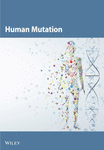An improved electronic microarray-based diagnostic assay for identification of MEFV mutations†
Communicated by Paolo Fortina
Abstract
Recent technological advances, such as DNA chip devices that allow automated, high-throughput genotyping, promise to considerably improve the detection capability of single-nucleotide polymorphisms (SNPs) in clinically relevant genes. We used the NanoChip® Molecular Biology Workstation (Nanogen, www.nanogen.com) and recently introduced microelectronic array technology to develop a detection method for the more frequent mutations involved in familial Mediterranean fever (FMF), an autosomal recessive disease that affects several ethnic groups in the Mediterranean population, whose early diagnosis is crucial if severe complications are to be prevented. We adapted the previously described Nanogen procedures to FMF mutation analysis, introducing modifications that notably improve the technique. First, as the original procedure makes use of costly dye-tagged reporter sequences, we devised a universal reporter strategy, which was first evaluated and validated on the robust, previously established factor V Leiden and factor II (prothrombin) NanoChip diagnostic assays. FMF (MEFV), factor V (F5), and factor II (F2) genotypes identified using this improved system were totally concordant with results of other genotyping methods (denaturing gradient gel electrophoresis [DGGE], SSCP, and RFLP analysis). Second, we showed that the target sequences loaded on the NanoChip cartridges can be rehybridized several times in a highly reproducible manner, allowing sequential analysis of mutations. Thus, we devised a strategy that allows us to monitor the possible interference of additional mutations or SNPs at probe or stabilizer sequences. Finally, a comparative cost per sample analysis demonstrates that the accurate and reproducible FMF mutation detection assay we developed can be readily implemented in the clinical laboratory setting at reasonable expense. Hum Mutat 23:621–628, 2004. © 2004 Wiley-Liss, Inc.




